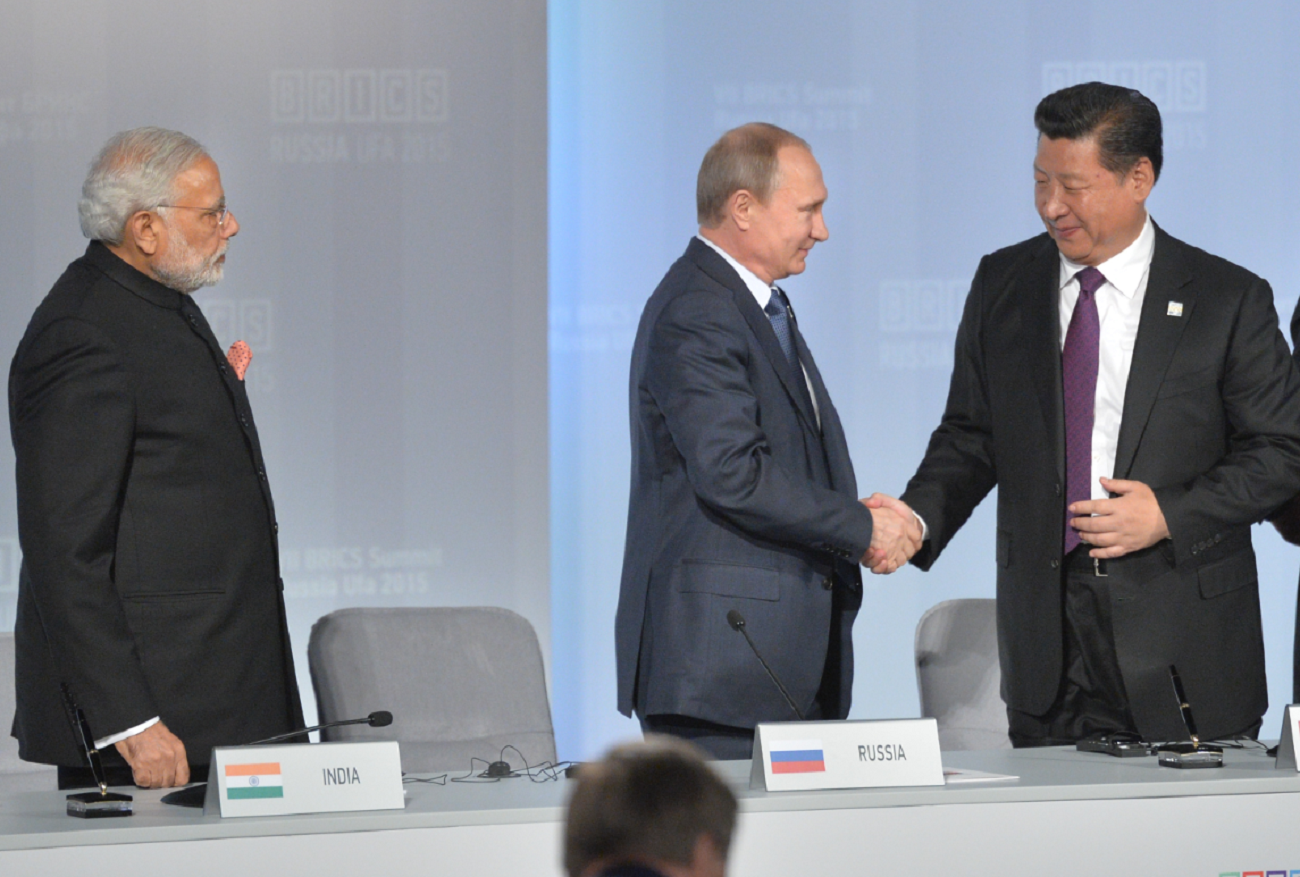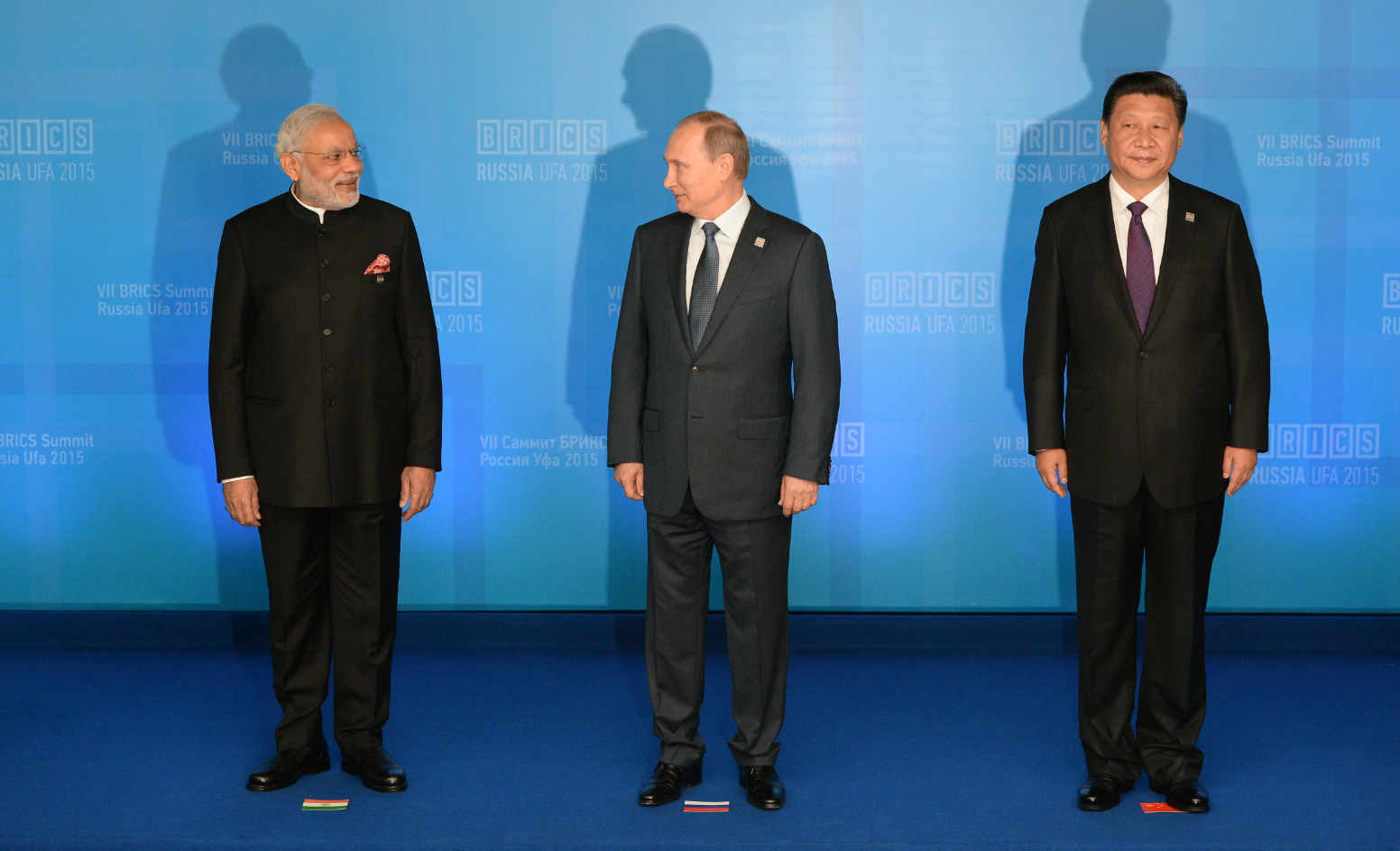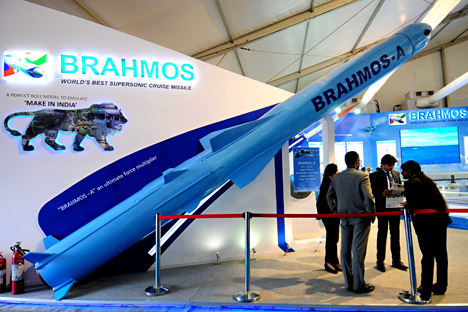How India sees the growing ties between Russia and China

Narendra Modi, Vladimir Putin and Xi Jinping during the 2015 BRICS summit in Ufa. Source: Alexei Druzhinin/RIA Novosti
Ever since the demise of the Soviet Union in December 1991, the relationship between Moscow and Beijing has been eagerly watched by political, economic, military and strategic analysts and think tanks worldwide. India is no exception to this as the country's security depends on the solid partnership with Moscow and anxiety over the growing Sino-Russian bonhomie is nothing but natural.
Indian apprehensions and fears about a nexus between Moscow and Beijing and lately a greater involvement of China's 'all weather' ally Pakistan in regional affairs in a trilateral format, specially in Afghanistan may not appear groundless.
New Delhi wonders about the extent to which Moscow is willing (or being forced to) accommodate Beijing's interests. Russian accommodation of Chinese interests has consequences for India's long-term security and strategic interests, including freedom of sailing in South China Sea - India's gateway to Russia, Japan, Korea and Pacific Ocean.
But the main point is how Moscow looks at this relationship with China marred by centuries of mistrust and conflicts, including the 1968 Damansky Island armed clashes.
However, by give and take Moscow and Beijing finalised their border dispute by demarcating their over 4000 kilometre long bilateral boundary in 2000. Incidentally, the Damansky Island, which witnessed fierce fighting in 1968, has been now ceded to China under the border pact.
Diplomacy is an art of the possible and the prime task of any government is to ensure peace along national borders - a prerequisite for economic development. From this point the two bordering nuclear giants with a troubled history have managed to achieve this.
An era of Sino-Russian partnership
Addressing the annual joint session of the Russian parliament in December 2016, President Vladimir Putin described Sino-Russian relations in the following words: “In today’s challenging environment, the comprehensive partnership and strategic cooperation between Russia and China has become one of the key factors in ensuring global and regional stability. This partnership can be regarded as a model for shaping a world order free from the domination of a single country, no matter how strong it is, and taking into account the interests of all countries in harmony.”
Although, many attribute the growing proximity between Moscow and Beijing to the anti-Russian Western sanctions over Ukraine crisis and return of Crimea into Russia's fold in 2014, the Sino-Russian entente began to form much earlier.
The formation of Shanghai Five in 1996 and its eventual transformation into Shanghai Cooperation Organisation (SCO) five years later in 2001 could become a reality just because Moscow and Beijing succeeded in resolving their outstanding historical differences.
This, however, does not mean that an economically weakened Russia, has become or willing to become a ‘yes-man’ for China or that there is a complete trust or consensus among them on all issues.
At an international conference on Sino-Russian relations in Moscow last year, Russian Foreign Minister Sergei Lavrov had said, “this relationship is built on an imperative to not turn a blind eye to various issues where consensus has yet to be reached.”
Speaking at the same conference, Li Fenling, Chinese Ambassador to Moscow in 1995-98, identified “lack of mutual trust” as the main problem in bilateral Sino-Russian relations. He described Russia as “unpredictable.”
Concept of Eurasia
Beijing and Moscow do not see eye-to-eye even on the definition of Eurasia, the arena of China's One-Belt-One-Road (OBOR) initiative. For China, Eurasia is the territory of the former USSR. While, according to Russian Deputy Foreign Minister Igor Morgulov, Moscow sees Eurasia as the territory from British Isles in the west to the Japanese islands in the east, from Arctic in the north to India, Iran and the Indian Ocean in the south.
Although Russian President Vladimir Putin is expected to attend the OBOR summit convened by Chinese leader Xi Jinping in Beijing in May, Moscow is in favour of revival and development of scores of ancient routes that criss-cross the huge Asian heartland, including the North-South International Transport Corridor (NSITC) linking India with Russia and further north via Iran.
Tussle for domination of Central Asia
Unfortunately, the Indian discourse on Russia-China relationship is based on the Western narrative and misses nuances of the Russian discourse on relationship with its neighbour.
Russia, which ruled Central Asia for 200 years is naturally feeling challenged by the Chinese economic expansion in the former Soviet republics. Due to its weakened post-Soviet economy Moscow is unable to match China's financial might, which has been providing hefty and cheap loans to the local governments in exchange for their natural wealth and other economic gains.
Greater involvement of the Central Asian republics in Chinese OBOR initiative is also seen as a challenge to established railway and road networks linking Far East and Europe through Russian territory. The West had always dreamt of transporting Caspian and Central Asian hydrocarbons and other resources bypassing Russia, although the European Union's Nabucco pipeline project to ship Caspian natural gas to Europe was aborted in 2013, but the Chinese OBOR could revive it in another avatar.
Though in the Russian military there is a taboo on publicly commenting about the heavily armed Asian nuclear giant, media reports from time to time reflect such apprehensions and concerns.
Citing a Pentagon report about China's military preparations and its "thousands" of intermediate range nuclear missiles tucked in long tunnels, Director of the Russian Science Academy's USA and Canada Studies Institute Sergey Rogov said, “We don't know their exact number and length of these tunnels, but under the Intermediate Nuclear Forces Treaty (INF Treaty) like the U.S., we also do not have this class of missiles.”
A number of Russian arms control experts I spoke to in Moscow agree that any talks with the U.S. on a nuclear arms cut would have to keep in mind the Chinese nuclear stockpile.
Contrary to certain assertions, in its arms trade with Beijing, Moscow not only keeps its own strategic security interests, but also of its closest strategic partners, Russian defence experts claim. Moscow had refused to sell its MiG-31 Foxhound interceptor and state-of-the art Iskander missiles to China as it could jeopardise the security of India and Vietnam.
There is a clear understanding in the Kremlin about the risk of Russia sliding into becoming a Chinese ‘protectorate’ and raw material appendix if the economy, which is suffering from the U.S.-led Western sanctions, fails to undergoes radical reformation.
“Unless Russia switches to a strategic planning of economic development on the basis of its own sources of credit, the real essence of strategic partnership with China will consist in the subordination of the Russian economy to the interests of China's growth,” said Kremlin economic advisor Sergei Glaziyev at a recent brainstorming session.
Earlier, President Vladimir Putin had set up a task force headed by his liberal ex-finance minister Alexey Kudrin to draft an economic recovery plan by the end of this year.
New geopolitical dynamic
Chinese activities in Central Asia and Afghanistan and Russia's engagement with Pakistan could separately cause concern in Moscow and New Delhi, but even pooling efforts they are unable to economically challenge Beijing.
And if the Donald Trump administration plays the Chinese card against Moscow, then both Russia and India will be challenged politically.
Most Russian experts do not see China as a substitute of the EU for Russia, as even Russians living in Far East of the country just across border with China view themselves as part of the European civilisation and hope sooner or later that Moscow's conflict with the West over Ukraine will be resolved. Secondly, they are well aware of China's global agenda and relationship with the United States. The spectre of G2 (U.S.-China) is haunting Russian minds and they do not trust China as an ally they can fall back on in case of an aggravation of conflict with the West.
While everybody talks about Beijing blocking India's Nuclear Suppliers Group (NSG) entry, nobody seems to be aware that it is only Russia, which is building nuclear power plants in India, that would stand to gain from India’s entry into the group. After constructing at least eight reactors Russia could set up a nuclear fuel fabrication facility in India for domestic consumption and export.
Diplomacy is an art of the possible, and there are a few vital issues in which the interests of India, Russia and China coincide. All the three countries with various contradictions and apprehensions have an equal stake in the stability and economic development of secular regimes in former Soviet republics of Central Asia and a peaceful Afghanistan not posing terrorist and narcotics threats to its neighbours.
The February Beijing visit of Indian Foreign Secretary S. Jaishankar for the first Strategic Dialogue should also be seen as encouraging signal in the right direction.
Vinay Shukla is an Indian journalist, who has covered Russia for over four decades. Views expressed in this column are personal. Read more of his articles here.
Views expressed in the column are personal.
If using any of Russia Beyond's content, partly or in full, always provide an active hyperlink to the original material.
Subscribe
to our newsletter!
Get the week's best stories straight to your inbox


